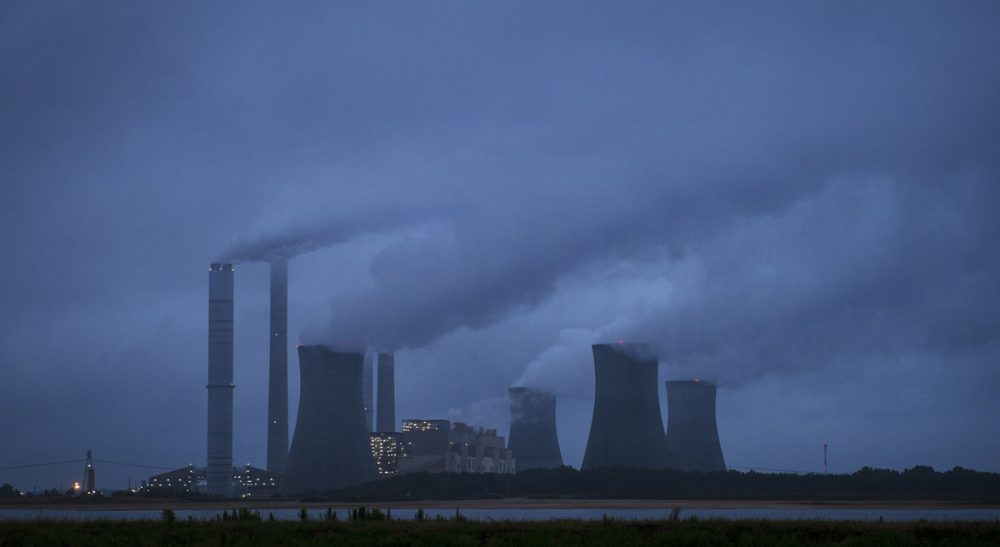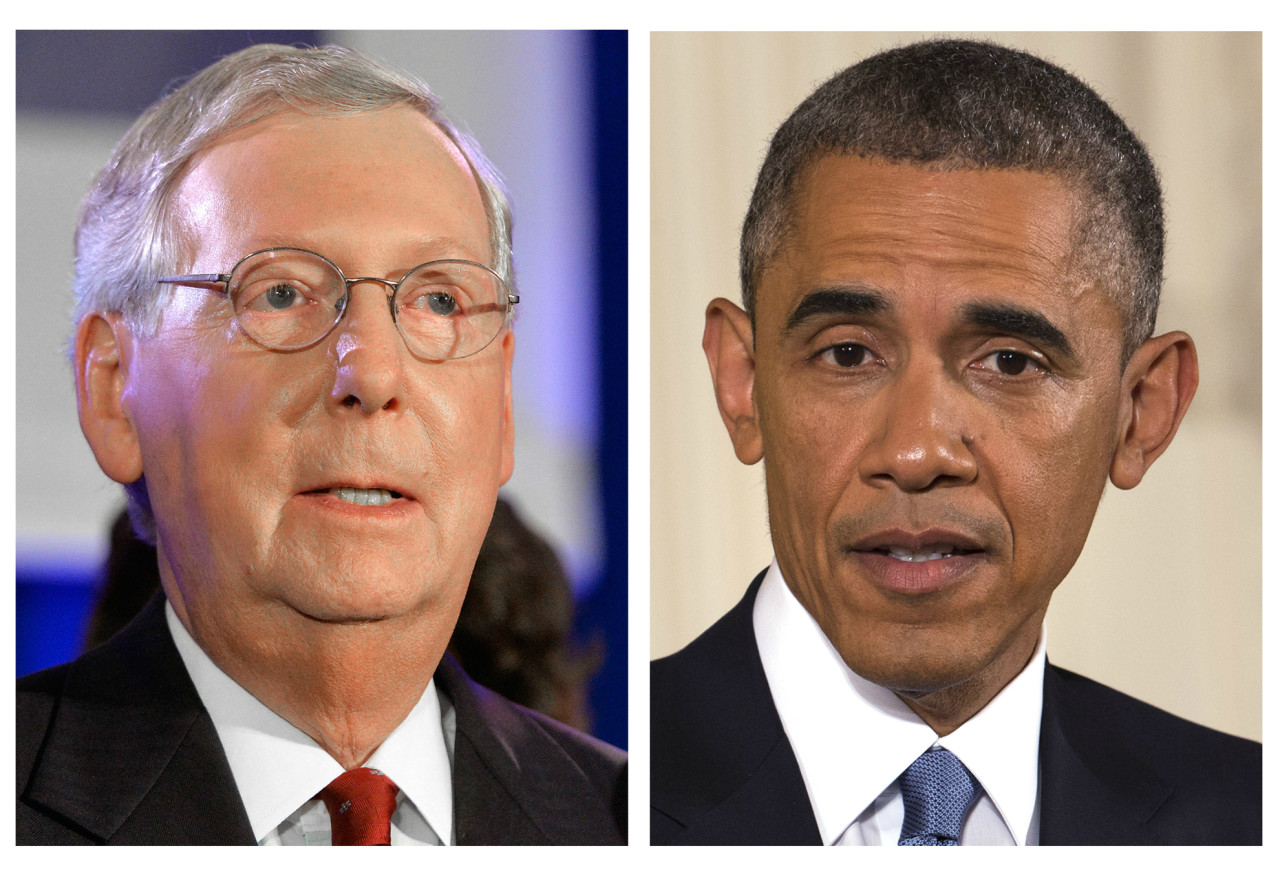Advertisement
President Obama's Climate Deal Doesn't Go Far Enough

Earlier this month, President Obama and President Xi Jinping of China signed an agreement to curb greenhouse gas emissions, and thus reduce the risk of climate change, in a deal that some sources are already claiming to be a “landmark” and “historic” event.
In the deal, which many thought would be impossible to broker, the United States has agreed “to cut net greenhouse gas emissions 26 to 28 percent below 2005 levels by 2025…[and] President Xi Jinping of China announced targets to peak carbon dioxide emissions around 2030, with the intention to try to peak early, and to increase the non-fossil fuel share of all energy to around 20 percent by 2030.” The fact that the United States and China together produce 45 percent of the world’s greenhouse-gas emissions makes it obvious why this agreement is so important.
Predictably, Republicans responded to the deal by criticizing almost everything about it. House Speaker John Boehner called it “the latest example of the president's crusade against affordable, reliable energy that is already hurting jobs and squeezing middle-class families," and Senate Minority Leader Mitch McConnell slammed it for requiring “the Chinese to do nothing at all for 16 years.”
But in making that statement, Sen. McConnell — who earlier this year noted that he doesn’t believe in global warming -- may have unintentionally made one of the most important pro-environment arguments of the decade.
[Climate change] is solid science proven and corrected by the passage of time.
Because he's right: President Obama's climate deal isn't strong enough. We can’t afford to wait another 16 years for change. It needs to start now, and it needs to start everywhere.
It’s become almost common to encounter people who deny the existence of climate change and global warming. Sen. Jim Inhofe (R-Okla.) even wrote a book about it. Climate change deniers reject the entire idea that the world will warm up over the next few decades, or if they do accept the idea, they claim that it is part of the normal course of events: it’s something that has happened before, and will happen again, no big deal. Or they label the whole thing a “theory” or a “hypothesis,” terms they mistakenly think mean “wrong.”
This at least partially explains how climate change deniers can reject any new scientific study that attempts to chart the changes the world will face as a result of greenhouse gasses. The efforts are simply seen as predictions and guesses, almost as if scientists are soothsayers or fortune tellers gazing into crystal balls.
Advertisement
But one of the benefits of the passage of time is that it is utterly objective. It doesn’t care what our theories or predictions are, doesn’t care about their accuracy. It simply unfolds, and so exposes what is, and what has happened.
So, fine: if they’re not going to be persuasive, let’s not look at any of the more recent studies on climate change. Let’s not even look at any study published this millennium.

Let’s go back to 1981, to an article in Science on the “Climate Impact of Increasing Atmospheric Carbon Dioxide,” wherein the authors (J. Hansen et al) provided a series of projections about rising global temperatures based on the best data and models available at the time.
Their projections, which extended to the year 2100, discussed several possible outcomes based on various scenarios. In their most aggressive projection, in which they assumed that the global energy growth rate (and thus roughly the production of CO2) would remain steady at around 3 or 4 percent per year as it had for the entire 20th century, the world would face a 3 C to 4.5 C (~5.4 F to 8.1 F) rise in temperature by the end of the 21st century. Perhaps more troubling, their most conservative projection, in which there was no growth in the global energy rate whatsoever, still projected a 1 C (1.8 F) rise in temperature.
So what? Hansen et al’s article is well over 30 years old, and anyone who was alive in the 1980s will remember the terrible computing capacity of the original desktop PCs, which sometimes crashed under the unbearable strain of simply being powered on. There’s no way those numbers could be correct, right?
Indeed, it turns out they aren’t. Because we now have the last 30 years of actual average temperatures to lay over the top of the projections, which is exactly what realclimate.org did in 2012. The results show that Hansen actually underestimated their projections by about 30 percent.
In other words, their absolute worst-case-scenario 4.5 C projection might actually be closer to 6 C, or 10.5 F to 11 F.
In other words, this is no longer “conspiracy” or “hoax,” or whatever other word climate change deniers want to use. This is solid science proven and corrected by the passage of time. This is truth.
even in the best-case scenario, we’ll still face heat waves, desertification, agricultural devastation and rising sea levels that will displace huge swaths of humanity.
(By the way, the Intergovernmental Panel on Climate Change has recently corroborated many of Hansen et al’s findings, and has come up with roughly the same projections — see their graph here.)
So what happens if we do have an absolutely worst-case scenario and global temperatures rise by 6 C? The last time this happened, some 55 million years ago, the result was a mass extinction of both plants and animals. We would very likely suffer the same fate.
But even in the best-case scenario, we’ll still face heat waves, desertification, agricultural devastation and rising sea levels that will displace huge swaths of humanity.
So you’re right, Sen. McConnell. Sixteen years is too long to wait for change, whether we’re talking about the United States, or China, or anyone else, for that matter. We need — we all need — to start today.
In fact, we needed to start 30 years ago.
Related:
- Cognoscenti: Why It Matters That The World’s Two Biggest Polluters Forged A Climate Accord
- On Point: Guest Post: U.S.-China Climate Deal is an Important Step In Long Road Ahead
- Here & Now: For The First Time, China Agrees To Cap Carbon Emissions
- April 2, 2013: James Hansen, NASA Scientist Who Raised Climate Change Alarm, Is Retiring
